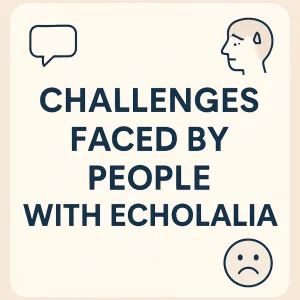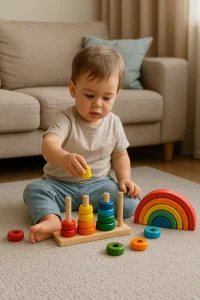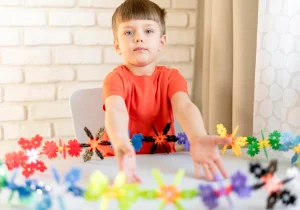8 Effective Ways to Prevent Still Face Syndrome in Babies
Last Updated: January 21, 2025
Imagine this: You’re playing with your baby, smiling and making fun faces, and they’re giggling right back at you. But what happens when that lively, responsive face suddenly goes blank? No smiles, no expressions—just stillness. This lack of response from you can lead to what’s known as Still Face Syndrome.
In simple terms, Still Face Syndrome occurs when a baby doesn’t receive any emotional reactions from their caregiver. It’s like holding up a mirror to your baby and then suddenly turning it off. This might sound harmless at first, but to a baby, who is just learning to connect emotionally, it can be confusing and even distressing. Babies depend on these facial expressions and responses to feel secure, learn social cues, and build emotional connections. When these cues are absent, they can experience anxiety, stress, and in some cases, a withdrawal from social interaction altogether.
Concerned about your child’s speech development? Get a free consultation with our experts today! – Book Your Free Consultation
1. Make Eye Contact
If there’s one thing babies adore, it’s making eye contact. Think of it as their way of saying, “Hey, I see you!” It’s one of the simplest and most powerful ways to connect and bond. From the moment they are born, babies search for faces, and making eye contact with you not only comforts them but helps build their emotional development. It’s like opening a window to their tiny world, helping them feel seen, loved, and secure.
Why It Works
Eye contact is a natural way for your baby to bond with you. When your little one locks eyes with you, they’re not just staring—they’re learning! They start recognizing your face, understanding emotions through your expressions, and developing trust. By gazing lovingly at your baby, you’re teaching them how to connect emotionally. It’s also a way to make your baby feel safe, which is a huge part of preventing Still Face Syndrome. Studies have shown that babies who receive regular eye contact tend to feel more secure, and are more likely to develop social and emotional skills as they grow.
How to Do It
Making eye contact is something you probably do without thinking, but here are a few simple tips to make those moments even more meaningful:
- Smile and Be Expressive: Whenever you make eye contact, smile gently. Babies love bright, happy faces. If you make different expressions (surprise, joy, curiosity), your baby will watch and learn from your emotions.
- Talk to Your Baby: Make eye contact while talking or singing to your little one. Whether you’re sharing how your day went or singing their favorite lullaby, they’ll be captivated by your face and voice together. These interactions will help them connect the dots between what they hear and see.
- Play Peek-a-Boo: A classic game with a great purpose! Peek-a-boo is more than just fun—it’s a learning opportunity for your baby. Hide your face behind your hands or a cloth, then pop back into view with a smile. Your baby will love the surprise, and it teaches them about facial expressions, social interactions, and that you’ll always come back.
- Slow Down and Stay Close: Try to be at eye level with your baby when you speak to them. Whether they’re lying down, sitting, or in your arms, getting close and meeting their eyes shows them they have your full attention.
Remember: It’s all about making those everyday moments count. Even just a few minutes of direct eye contact each day can help your baby feel more connected to you. And as a bonus, these tiny moments will leave both of you feeling happier and more bonded!
2. Respond Quickly to Your Baby’s Cues
Why It Works
Have you ever noticed how your baby communicates without saying a word? Whether it’s through little coos, giggles, or even cries, these are their ways of talking to you! And when you respond quickly and warmly, it builds a deep sense of trust and connection. Your baby learns that they are heard, that their feelings matter, and that you will always be there to comfort them.
This quick response to your baby’s cues helps prevent feelings of insecurity or anxiety, which can contribute to Still Face Syndrome. Essentially, when your baby sees that you’re there, paying attention, and meeting their needs, they feel secure and safe. And this is what every parent wants: a happy, thriving baby who feels loved!
How to Do It
You don’t need to be a mind-reader to respond to your baby’s cues; you just need to be present. Here are some simple ways to ensure your baby feels connected to you and loved every single day:
- Answer Their Cries Quickly and Calmly: If your baby cries, it’s their way of telling you they need something—whether it’s a hug, a feed, or just some comfort. When you respond quickly and calmly, your baby learns that they can trust you to be there, which fosters emotional security.
- Celebrate Their Coos and Giggles: Babies communicate in so many cute ways—little sounds, movements, and even facial expressions. React with a smile, talk to them, or even imitate their sounds. If your baby coos, coo back. If they giggle, laugh along! This two-way interaction not only makes your baby feel heard but also encourages them to keep expressing themselves.
- Recognize Different Cues: As you spend more time with your baby, you’ll start to notice different cries, movements, or even expressions that signal what they need—be it hunger, sleepiness, or just wanting to be held. Learning to recognize these cues means you can respond appropriately and quickly, which builds a deeper bond and prevents any emotional withdrawal.
- Be Present in the Moment: The most important thing you can do is to be present. Babies are highly perceptive and can tell when you’re really tuned into them. When they have your full attention, they feel valued and loved. Even small moments throughout the day, like diaper changes or feedings, can become opportunities to connect deeply by responding to their needs and signals.
3. Use Your Voice to Connect
Ever notice how your baby perks up at the sound of your voice? It’s because your voice is one of the most comforting sounds to them! The way you speak, sing, or coo to your baby not only calms them but also helps them recognize the soothing rhythm and melody of your speech. And guess what? This connection through voice is a huge step towards helping prevent Still Face Syndrome.
Why It Works
Babies are born listeners. They love the familiar sound of your voice, which they have been hearing since their time in the womb. Using your voice to talk, sing, or make playful sounds helps to engage their attention and create a warm, comforting bond. Every time you speak or sing, you’re not only comforting your baby but also stimulating their emotional development.
Research has shown that babies who are spoken to frequently develop better emotional responses, communication skills, and social understanding. When they hear your voice, they feel your presence and love, and this helps them feel secure and connected.
How to Do It
Connecting with your baby through your voice doesn’t have to be complicated—sometimes, it’s the simplest things that make the biggest difference. Here are some ways to use your voice to connect with your little one:
- Talk to Them Throughout the Day: It might feel a bit funny at first, but narrating your day to your baby is a fantastic way to engage them. Whether you’re folding laundry, preparing a meal, or changing their diaper, keep a gentle, happy tone as you describe what you’re doing. It’s not so much about what you’re saying but the act of speaking itself that matters.
- Sing a Song or a Lullaby: You don’t have to be a professional singer—your baby doesn’t care about perfect pitch! Singing lullabies or nursery rhymes not only soothes your baby but also exposes them to different tones and rhythms. It’s a great way to make bedtime or quiet time even more special and meaningful.
- Use Playful Tones and Sounds: Babies love it when you change your tone of voice. Try making playful sounds, like animal noises or silly voices, and see how your baby responds. This kind of vocal play helps them learn to differentiate between sounds and emotions. If they coo, echo back with the same sound in a happy tone—this mimicking helps them feel heard and encourages them to make more sounds.
- Read to Your Baby Regularly: You may think that reading to a baby who doesn’t yet understand words isn’t very useful, but it’s actually a wonderful bonding experience. The sound of your voice reading a book in a calm, soothing manner can relax your baby, improve their listening skills, and even stimulate their imagination.
Also Read: Identifying and Managing Still Face Syndrome in Children
4. Play Together Often
Playtime isn’t just fun—it’s a chance to build a deeper bond with your baby. Every smile, giggle, and little movement during play is a powerful moment for emotional connection. And, of course, for your baby, playtime is learning time! They’re discovering how to interact, explore, and respond to the world around them. That’s why playing together is a fantastic way to prevent Still Face Syndrome and nurture their social and emotional growth.
Why It Works
Play is more than just entertainment for your baby; it’s how they learn to communicate, bond, and trust. When you engage in playful activities, you’re showing your baby that you are there for them, you understand them, and most importantly, you enjoy being with them. This not only strengthens your bond but also helps your baby feel secure and valued.
Playful interactions help babies read facial expressions, develop eye contact, and build an understanding of emotions. These elements are crucial in preventing the kind of disconnection that can lead to Still Face Syndrome.
How to Do It
The best part? Playing together is super simple and can be a part of your everyday routine! Here’s how you can easily make playtime a special bonding experience:
- Tummy Time Is Quality Time: Tummy time is a great way for your baby to strengthen their muscles and improve their motor skills. But it’s also an opportunity for you to get down to their level, make eye contact, and talk to them. Place a few colorful toys within their reach or lie face-to-face with them, encouraging smiles and coos. Not only does this help your baby physically, but it also promotes social and emotional connection.
- Gentle Tickles and Soft Touches: A little tickle on the tummy, gentle patting on their back, or a playful rub on their feet—these small touches can bring joy to your baby and help build physical closeness. As your baby giggles in response, be sure to smile back and use loving tones. These little playful touches help your baby feel safe and nurtured.
- Simple Games Like “Where’s Your Nose?”: Play simple and interactive games like “Where’s your nose?” or “Peek-a-boo!” They are not just fun but also crucial for teaching your baby about cause and effect. Your expressions, sounds, and movements will all grab your baby’s attention and encourage them to respond. For example, when you gently touch their nose and say, “Where’s your nose?” it not only makes them giggle but also helps them learn the names of their body parts and associate sounds with actions.
- Follow Your Baby’s Lead: Let your baby guide the playtime. If they show interest in a toy, join them in exploring it—shake it, make it move, or talk about its colors and sounds. When you let your baby take the lead, they learn to interact in a way that makes sense to them, which can boost their self-confidence and sense of discovery.
5. Create a Happy Environment
Your baby’s world is full of new sounds, sights, and experiences. Imagine how much more enjoyable it is for them when their environment is happy, bright, and full of love! Babies are very sensitive to the world around them, and a positive atmosphere not only makes them feel secure but also encourages their emotional and social growth. Creating a joyful environment is key to nurturing their development and preventing Still Face Syndrome.
Why It Works
Babies feel more secure when surrounded by positive energy and loving interactions. A happy environment is not just about pretty colors and cute toys; it’s about the emotional atmosphere around your baby. When your baby feels that they are in a loving and joyful space, it boosts their confidence, makes them feel safe, and helps them form strong emotional bonds. This reduces the likelihood of feeling disconnected, which is crucial in avoiding the effects of Still Face Syndrome.
How to Do It
There are many simple ways to create a warm, loving environment that will make your baby feel happy and safe. Here’s how you can do it:
- Keep it Bright and Colorful: Babies are drawn to bright colors and patterns. Surround them with colorful toys, soft blankets, and engaging visuals. You can also decorate their space with cheerful pictures, fun mobiles, or anything that sparks joy. It stimulates their senses and keeps them curious and happy.
- Stay Positive and Encourage Joyful Moments: Babies can pick up on your emotions, so it’s important to create a positive emotional environment. Try to stay calm and happy around your baby, even during challenging moments like a fussy bedtime. Smile often, use a gentle voice, and let your baby see that they are surrounded by love and positivity.
- Play Calming Music or Sing Softly: Soft lullabies, gentle instrumental music, or even the sound of your own voice singing to your baby can create a peaceful, happy environment. Music can soothe your baby, reduce stress, and help them relax. Singing to your baby during playtime, bath time, or bedtime can make everyday routines more comforting.
- Introduce Simple and Fun Routines: Babies love routines—they help them know what to expect and make them feel secure. Creating small, fun routines like a morning play session, a relaxing bath in the evening, or story time before bed gives your baby a sense of consistency and joy. Keep these routines happy and filled with moments of connection.
- Bring Laughter into Your Baby’s Day: Laughter is a wonderful way to create a joyful environment! Try to bring humor into your day—make silly faces, laugh together, and enjoy those little giggles that your baby loves to share. A playful and cheerful space encourages your baby to explore, engage, and feel safe.
6. Be Present – No Distractions!
In today’s world, distractions are everywhere—phones, TV, social media—but your baby needs one thing more than anything: your full attention. When you’re tuned in to your baby, they can sense it, and it makes a world of difference in their emotional connection with you. Being present means being fully engaged in the moment, showing your baby that they are important, valued, and loved.
Why It Works
Babies are quick to notice whether you’re paying attention to them or not. When you are fully present with your baby, they can sense that you are there for them, which builds trust, emotional security, and a stronger bond. By giving them your undivided attention, you’re preventing the emotional disconnection that can lead to Still Face Syndrome.
Being present helps your baby feel seen and heard. When they look at you, they are searching for your eyes, your smile, and your expressions. If you’re distracted, they may start to feel disconnected, leading to feelings of anxiety or insecurity.
How to Do It
It’s not about being perfect all the time—it’s about finding those little moments to be fully present. Here are a few simple ways to stay focused on your baby and create deeper emotional connections:
- Put Down the Phone: While it’s tempting to check your messages or scroll through social media, make sure to put your phone down during playtime, feeding, or any other bonding activities. Those notifications can wait, but your baby is looking to connect with you in the here and now. Make a conscious effort to give your baby eye contact and respond to their sounds, smiles, and movements.
- Limit Background Noise: Turn off the TV, radio, or any other distractions that might pull your attention away from your baby. A quieter environment helps you stay more present and allows your baby to focus on interacting with you.
- Schedule Daily Quality Time: It doesn’t have to be long—even 10-15 minutes of undivided attention makes a big difference. Set aside some time each day just for you and your baby. It could be during bath time, feeding, or a play session. Just make sure to be fully engaged and connect face-to-face.
- Use Your Body Language: Show that you are present by leaning in when your baby makes a sound or gesture, and be expressive in your responses. Babies read body language as much as facial expressions, so be sure to nod, smile, and react positively when they try to interact with you.
- Mindful Moments Matter: There will be times when life is busy, and distractions are hard to avoid—that’s okay! Just remember that even small mindful moments, like making eye contact while feeding or smiling when you change their diaper, count as quality bonding time.
7. Let Them Meet New People
While babies form their deepest bond with their parents, they also benefit greatly from interacting with others. Seeing different faces, hearing new voices, and experiencing varied ways of smiling and engaging all contribute to your baby’s social and emotional development. Plus, allowing your baby to meet new people helps them become more comfortable in social situations, fostering adaptability and reducing the risk of Still Face Syndrome.
Why It Works
Imagine seeing the same face all day, every day. While your baby loves to see you and connect with you, meeting different people introduces them to new experiences and ways of interacting. Babies learn that everyone has a different voice, smile, and way of making eye contact. These varied interactions are great for their social growth because they learn how to respond to others, develop flexibility, and pick up on different social cues.
Meeting other people, like family members, friends, or even other babies, can help your little one learn about different expressions, sounds, and behaviors. These early social experiences are important for developing empathy and understanding social norms as your baby grows.
How to Do It
You don’t need to go out of your way to introduce your baby to a wide social circle. Just make sure that your little one is comfortable and happy during interactions with new people. Here are some simple ideas to get started:
- Invite Family and Friends Over: Allow your baby to interact with their grandparents, aunts, uncles, and friends regularly. Babies feel comfortable when surrounded by loving people, and each person has their unique way of interacting, which helps your baby learn to connect with different faces.
- Organize Baby Playdates: If you know other parents with babies around the same age, organize playdates! Babies enjoy being around other little ones, and these social interactions can help them learn to share, play together, and engage in different ways. Even if your baby is too young to actively play with others, just being around other babies can be stimulating and fun.
- Attend Community Events for Babies and Parents: Look for baby-friendly activities or groups in your area, such as baby yoga, mommy-and-me classes, or storytime at the local library. These events provide a safe and engaging way for your baby to meet new people and explore different social environments.
- Take Walks in Different Places: Something as simple as going for a walk in the park, visiting a friend’s house, or going to a baby-friendly cafe exposes your baby to different people, voices, and surroundings. Just make sure to keep them feeling secure and safe during these outings, staying close to provide comfort as they explore.
8. Keep Routines Steady and Use Gentle Touch
Babies love consistency, and they thrive on knowing what comes next. A steady routine provides a sense of safety, comfort, and predictability in their day-to-day life. Pair that with gentle touches, like cuddles, strokes, and gentle massages, and you have the perfect recipe for a baby who feels secure and deeply connected to you. Establishing regular routines and a gentle touch is essential for preventing Still Face Syndrome and promoting your baby’s emotional well-being.
Why It Works
Babies find comfort in routines—they help them understand and anticipate what’s going to happen next. When babies feel secure in their daily rhythm, whether it’s bedtime, feeding time, or playtime, they are more relaxed and emotionally stable. This regularity makes them feel safe, knowing that they are cared for and that their needs will be met.
And what’s more soothing than a loving touch? Babies connect deeply through touch; a gentle stroke on their back, cuddles before bedtime, or a warm embrace all make your baby feel loved and cared for. Physical touch is a universal language of love, and for babies, it’s one of the most powerful ways to bond.
How to Do It
Keeping a consistent routine and using gentle touch are easy yet effective ways to ensure your baby feels loved, safe, and happy. Here are some simple tips to help you get started:
- Establish Simple Daily Routines: Set up regular times for meals, naps, play, and bedtime. It doesn’t have to be strict but keeping a general pattern helps your baby know what to expect. For example, a calming bedtime routine could include a warm bath, gentle massage, a lullaby, and cuddles before putting them down to sleep.
- Be Predictable in Your Actions: Babies love repetition—it’s how they learn. You can make routines enjoyable by repeating the same songs during bath time, saying the same words before naps, or following a similar playtime pattern. This repetition makes your baby feel secure and happy as they know what to look forward to next.
- Use Gentle Touch Often: Physical touch is incredibly important for your baby’s emotional development. Gentle touches like cuddling, soft stroking, and holding your baby close during feeding or playtime help release oxytocin (the “love hormone”) which fosters bonding and relaxation. Baby massages, in particular, are a great way to soothe your baby while strengthening your bond.
- Be Flexible but Consistent: While routines are important, it’s okay to be flexible when needed. Babies can have different needs on different days, and sometimes routines may need to change slightly. The key is to maintain overall consistency, so your baby knows they are always loved and secure, even on days when things don’t go exactly as planned.
Bonding Activities and Their Benefits
| Activity | How to Do It | Benefit |
|---|---|---|
| Tummy Time | Place your baby on their tummy on a soft surface, such as a blanket. Stay face-to-face with them, talk, make facial expressions, or shake a small toy to catch their attention. Keep it short at first (a few minutes), gradually increasing the time as they become more comfortable. | Strengthens neck, back, and shoulder muscles, which helps with motor skills. Encourages eye contact and social interaction. |
| Peek-a-Boo | Cover your face with your hands or a cloth, then quickly reveal your face with a big smile and say “Peek-a-boo!” You can also use a toy or object to play this game. Repeat the motion to make it fun and engaging. | Helps your baby learn about social cues and emotional reactions. The surprise and repetition make them laugh and feel joy, enhancing emotional bonds. |
| Gentle Massages | After a warm bath or before bedtime, gently massage your baby using soft strokes on their arms, legs, back, and tummy. Use a gentle oil or lotion to make the experience soothing. Ensure your touch is light, loving, and rhythmic to help them relax. | Promotes relaxation, reduces stress, and can help with better sleep. Also builds a strong physical bond and sense of comfort between you and your baby. |
| Singing and Talking | Sing lullabies, nursery rhymes, or even talk about your day in a gentle and rhythmic voice. While feeding, changing diapers, or putting your baby to sleep, speak softly and maintain eye contact. Vary your tone and pitch to keep their attention. | Boosts language skills, auditory development, and emotional reassurance. Familiarizes the baby with your voice and helps them feel safe and loved. |
| Daily Routines | Maintain consistent routines like regular feeding times, play sessions, bath time, and bedtime rituals. For example, a bedtime routine can include a bath, a gentle massage, reading a book, and a lullaby. Stick to similar times each day to build a sense of predictability. | Creates a comforting and familiar environment for your baby. Predictable routines help the baby feel secure, making it easier to transition between activities and reducing anxiety or stress. |
Also read: How Still Face Syndrome Affects Your Child’s Emotional Health
Conclusion
Bonding with your baby is simple, fun, and so important for their growth. From making eye contact and responding to their cues, to using your voice and playing together—each small action helps strengthen your connection. Creating a happy environment, staying present, introducing them to new people, and maintaining gentle routines are all easy steps that make a big difference in preventing Still Face Syndrome. Remember, these little moments add up to help your baby feel secure, loved, and happy.
Start today, and don’t stress—it’s the simple, everyday moments that count. A cuddle here, a smile there, or just being present can go a long way in helping your baby feel connected. At Wellness Hub, we believe in supporting you and your baby on this beautiful journey. Keep bonding, loving, and enjoying every precious moment! Your baby is lucky to have you, and you’re doing a wonderful job.
Frequently Asked Questions:
1. What is Still Face Syndrome, and how does it affect my baby?
Still Face Syndrome occurs when a baby doesn’t receive emotional reactions from their caregiver, leading to feelings of disconnection and stress. It can impact a baby’s social and emotional development, causing anxiety or withdrawal. However, simple steps like bonding, eye contact, and being responsive can help prevent it.
2. How can I bond with my baby effectively to prevent Still Face Syndrome?
Bonding with your baby is all about small, meaningful moments. Make eye contact, respond to their cries and sounds, play often, and stay fully present. Being consistent in your interactions and showing love through gentle touch also helps build a strong emotional connection.
3. Why is playtime important for my baby’s emotional development?
Playtime isn’t just fun—it’s also key for your baby’s growth. When you play together, your baby learns to connect with you through smiles, sounds, and touch, all of which support their social skills. Simple games like peek-a-boo and gentle tickles help them feel secure and loved.
4. How does keeping a routine help in preventing Still Face Syndrome?
Babies thrive on consistency and routines because they feel safe knowing what to expect. Regular routines for feeding, play, and sleep create a sense of security. Adding gentle touch, like cuddles or massages, during these routines helps reinforce your bond and prevents feelings of disconnection.
5. What can I do if my baby seems less responsive or withdrawn?
If your baby is showing signs of withdrawal or isn’t responding to your interactions, try spending more focused time bonding with them through eye contact, touch, and gentle play. If you continue to have concerns about your baby’s responsiveness, it’s always best to consult with a healthcare professional for guidance.
6. How can I ensure my baby feels safe and happy during social interactions with others?
Introduce your baby to family, friends, and other babies in a gentle and loving manner. Watch for their comfort level, and be present to provide reassurance. Let them interact at their own pace, and make sure these social moments are fun and positive for your baby.
7. What are some simple ways to connect with my baby on a busy day?
Even on the busiest days, small moments count. Make eye contact when feeding, talk to them while doing daily chores, and smile at them often. These little interactions reassure your baby that they are loved and help prevent Still Face Syndrome.
8. How does my voice impact my baby’s emotional growth?
Your voice is one of the most comforting sounds to your baby. Speaking, singing, or using playful tones helps soothe them, keeps them engaged, and promotes emotional bonding. It’s a great way to connect and encourage social development.
9. How often should I spend bonding time with my baby to promote healthy emotional development?
Consistency matters more than duration. Aim to have multiple bonding moments throughout the day, even if they’re brief. Regularly making eye contact, playing, responding to cues, and offering cuddles can greatly enhance your baby’s emotional and social growth.
10. Where can I find more tips on promoting my baby’s well-being?
At Wellness Hub, we have plenty of resources and tips on parenting, emotional bonding, and overall baby well-being. Feel free to explore more on our website for additional guidance and support as you bond with your little one.
About the Author:
Shravanaveena Gajula
M.Sc ., Speech and Language Pathology (9+ years of experience)
Shravanaveena Gajula is a dedicated Audiologist and Speech-Language Pathologist with a BASLP and an M.Sc in Speech and Language Pathology. With experience spanning multiple settings, including Wellness Hub and Ashray Akruti, Veena specializes in a wide range of disorders from developmental issues in children to speech and language assessments in adults. Her expertise includes parent counseling, managing speech sound and fluency disorders, and creating individualized therapy programs. Veena is also PROMPT certified and an author of several insightful blogs on speech and language pathology, aiming to educate and assist caregivers in supporting their loved ones.
Book your Free Consultation Today
Parent/Caregiver Info:
Client’s Details:
* Error Message








